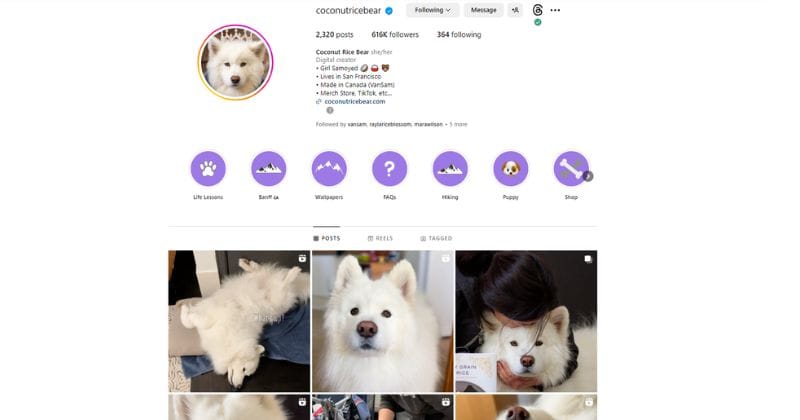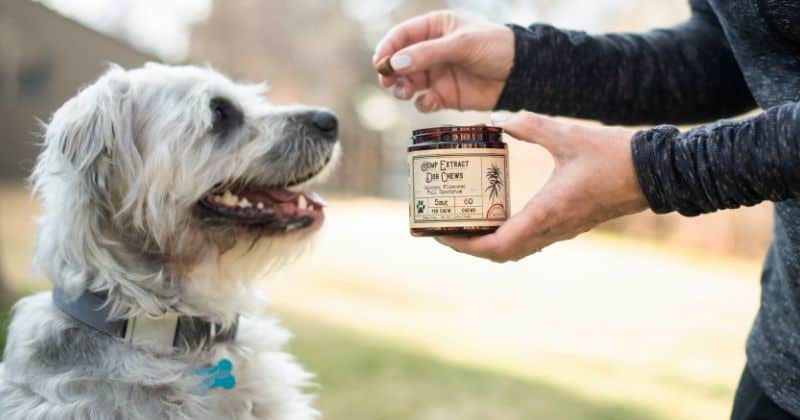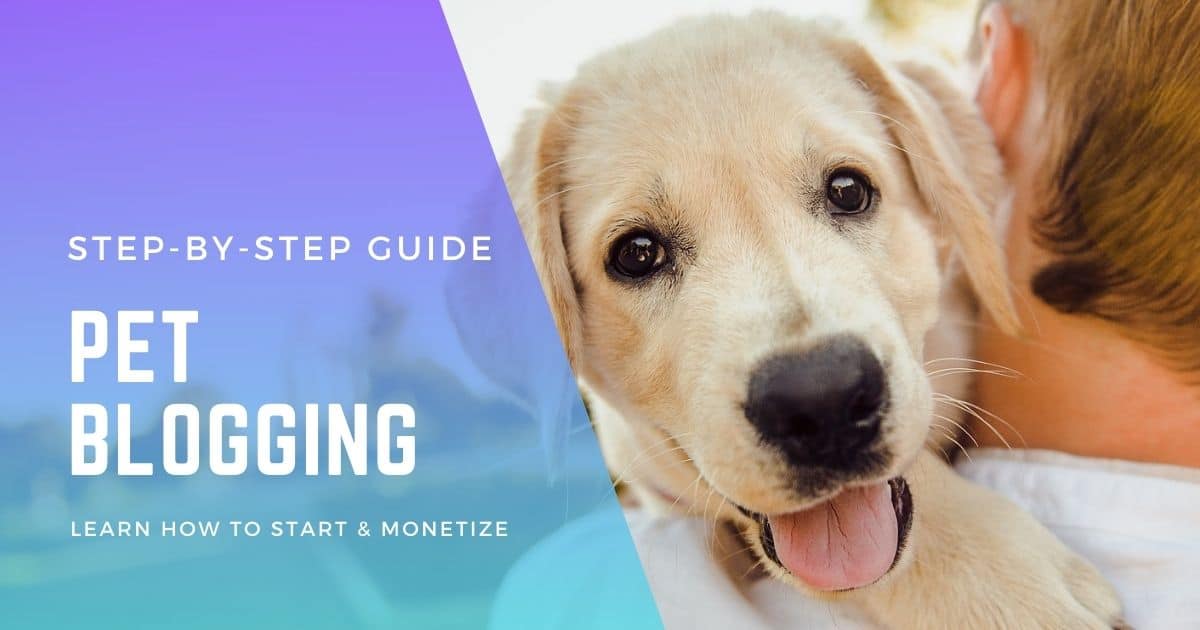Sharing stories about your furry friends and teaching others pet care tips has never been easier. Pet blogging is a digital gathering, and as a digital marketer and pet owner, I can assure you that it’s not just about fun; it’s a rewarding side hustle too.
Maybe you’re a pet lover looking to turn your passion into profit. Pet blogging is the perfect niche, and this guide offers practical tips on how to start blogging. From choosing the right topics to reaching fellow pet enthusiasts, you’re on the brink of a satisfying and potentially profitable adventure.
Are you ready to share your pet love stories and make some extra cash? Your words can build a community and even lead to heartfelt thank-yous from other pet owners. Let’s turn your love for pets into a business together.
What is Pet Blogging?

Pet blogging is the process of creating online content centered around our beloved animals, such as dogs and cats. It’s more than just writing; it’s about sharing pictures, videos, personal experiences, and heartwarming stories on platforms like WordPress. This enables connection with fellow pet owners and the broader pet-loving community. Whether it’s sharing valuable information about pet care or recounting delightful pet antics, pet blogging forms a unique bond among animal enthusiasts.
How Does Pet Blogging Work?
Understanding how pet blogging works can help you connect with fellow pet enthusiasts and share valuable insights. In this section, I’ll guide you through the essential steps to start your pet blog, making it an enjoyable and informative experience for both you and your readers.
Sharing Content
Unlike other niches, pet blogging often involves a deeper emotional connection. Pet bloggers craft engaging posts that not only inform but touch the hearts of their readers. With tools like the Dog Food Advisor, they provide valuable insights, recommendations, and even entertainment through pictures and videos of adorable pets. The aim is to create a space that feels like a community where pet lovers can gather and share.
Engaging With the Audience
In pet blogging, interaction goes beyond mere comments and likes. Successful pet bloggers build a sense of trust and community with their audience, often through personalized responses in the comments sections or social media platforms. Newsletters, updates on new posts, exclusive content, or special offers related to pet products keep this connection alive and thriving.
Consistency and Authenticity
Being consistent and authentic sets pet blogging apart. Regular updates, whether daily, weekly, or monthly, keep readers eager for more, while authenticity in sharing personal pet stories creates a genuine connection. This honesty, combined with relevant monetization strategies like affiliate links, can make a pet blog not just a hobby but a profitable venture.
Authenticity plays a significant role in successful dog blogging. Being genuine and true to yourself creates an authentic connection with your audience.
Understanding Your Target Audience
Pet bloggers need to understand the specific interests and needs of the pet-loving community. This may include researching popular dog-related topics or addressing common concerns that pet owners face. Tailoring content and incorporating strategies to monetize the blog makes pet blogging a unique and rewarding field.
By considering these aspects, you’ll find that pet blogging isn’t just another blogging niche. It’s about passion, community, authenticity, and a love for animals that can also be turned into a rewarding side hustle. Whether you’re writing about dogs or any other pet-related topics, focusing on these key elements will set you on the path to success in the pet-loving community.
Understanding Your Target Audience
To effectively reach your target audience as a pet blogger, it’s important to understand their interests and needs in the dog community. Tailor your blogging content accordingly by researching popular topics within the dog community or addressing common concerns that dog owners may have. Additionally, consider incorporating affiliate links into your posts to monetize your blog and improve SEO.
By following these talking points, you’ll be well on your way to becoming a successful pet blogger. Remember, consistency, authenticity, and understanding your audience are the keys to building a thriving online presence in the pet-loving community.
Incorporating SEO content strategy into your blogging efforts will help you attract more readers and improve your search engine rankings. Whether you’re writing an article about dogs or any other pet-related topic, make sure to optimize your content for maximum visibility.
Starting a Pet Blog: Step-by-Step Guide
Starting a pet blog is a rewarding way to share your love for animals and offer helpful advice. In this step-by-step guide, I’ll show you the simple process to get your pet blog up and running, making it easy for anyone, even with no technical experience, to begin their blogging journey.

Choose a domain name that reflects your pet blog’s niche and brand identity.
When starting a dog blogging site, choosing a domain name representing your blog’s niche and brand identity is the first step. Your domain name should be catchy, memorable, and relevant to the dog content you plan to share. For example
- If your dog blogging site focuses on travel tips for pet owners, consider including keywords like “travel” or “adventures” in your domain name. This can help improve your site’s SEO content strategy.
- If you specialize in blogging about dogs and providing health advice for pets, incorporating keywords like “dog blog,” “blogging,” “help,” and “blog post ideas” could be beneficial.
Remember to keep your blogging about pet blogs concise and easy to spell so that readers can easily find and remember your blog. This will help you provide the best care and help for your readers.
Set up your website using a user-friendly content management system like WordPress.
Once you have chosen the perfect domain name for your new blog, it’s time to set up your website. A user-friendly content management system (CMS) like WordPress can simplify this process for pet blogs. Here are some steps to follow when blogging:
- Purchase hosting and install WordPress.
- Choose an attractive blogging theme that complements your pet blog’s aesthetic while ensuring it is easy to navigate and showcases your content effectively. Selecting a theme that aligns with your blogging goals can help you attract more readers and potentially earn money through your blog.
- Customize the design elements of your blog content, such as colors, fonts, and layout, to make your pet blogs more appealing and potentially earn money from blogging.
- Install essential plugins for functionality and optimization.
By utilizing WordPress as your CMS for your pet care blog, you’ll have access to numerous resources and support from its extensive community of users. This can help you generate money through your blogging efforts.
Create an appealing design with easy navigation to enhance user experience.
To keep readers engaged on your pet blogging site, creating an appealing design with easy navigation is crucial. Consider these tips to take care of your blog and make money.
- Use visually pleasing images of pets throughout your website.
- Organize content into categories for effortless browsing.
- Ensure that menus are intuitive and accessible from any page on our pet care blog.
- Optimize loading times on your pet care blog by compressing images and minimizing unnecessary elements.
A well-designed pet care blog website will not only enhance user experience but also leave a lasting impression on your visitors.
Start publishing high-quality content regularly to attract readers.
Once your pet blog is set up, it’s time to start publishing high-quality content regularly. Consistency is key in attracting and retaining readers. Here’s how you can achieve this:
- Plan a content calendar, outlining topics and posting schedule.
- Research and write informative articles for your pet care blog that resonate with your target audience.
- Include engaging visuals such as photos, videos, or infographics.
- Encourage reader interaction through comments and social media sharing.
You’ll build a loyal following of pet enthusiasts eager to read your blog by consistently providing valuable content.
Choosing the Right Niche for Your Pet Blog

Selecting the right niche is crucial for success. Now you’ve selected the broad niche of pet blogging – but it’s a big niche.
So by identifying specific areas of interest (a sub-niche) within the broad field of pets, you can create a blog that caters to a more targeted audience.
- Identify specific areas of interest within the broad field of pets: Start by exploring various pet niches such as dog training, cat health, exotic pets, or even pet fashion.
Consider what topics you are passionate about and where your expertise lies. - Research existing blogs in your chosen niche: Take some time to research existing blogs in your selected niche. Understand their content strategy, target audience, and engagement levels. This will help you identify any gaps or opportunities you can fill with your unique perspective.
- Consider your own expertise or passion: When choosing a niche for your pet blog, it’s essential to consider your expertise or passion. Writing about something you genuinely care about will make it more enjoyable and allow you to provide valuable insights and information to your readers.
- Narrow down your focus: To stand out in the crowded world of pet blogging, it’s important to narrow your focus further within your chosen niche. Provide specialized knowledge or unique perspectives on a particular aspect of the topic. For example, if you choose dog training as your niche, you could specialize in positive reinforcement techniques or training specific breeds.
By selecting a specific niche within the broader realm of pets and tailoring your content accordingly, you’ll be able to attract a more targeted audience interested in your offer.
Remember that finding success may take time and effort; however, building a thriving pet blog is well within reach with consistency and dedication!
Keyword Research and Optimization for Pet Bloggers

Conducting keyword research is crucial for pet bloggers to ensure their content reaches the right audience. Using tools like Google Keyword Planner or SEMrush, you can identify popular search terms related to your niche. This allows you to understand what pet owners are searching for and tailor your content accordingly.
To optimize your blog posts effectively, it’s important to incorporate relevant keywords naturally throughout your content. This includes titles, headings, meta descriptions, and the body of your articles. By doing so, search engines can better understand the focus of your content and rank it higher in search results.
When selecting keywords for optimization, consider using long-tail keywords that are more specific and less competitive. These longer phrases provide a better chance of ranking higher in search results than broader terms. For example, instead of targeting “pet food,” you could use “best organic dog food brands” as a long-tail keyword.
Monitoring and analyzing keyword performance is essential for making data-driven decisions in future content creation. Keep track of how well different keywords drive traffic to your blog. This data will help you identify trends and adjust your strategy accordingly.
Monetizing Your Pet Blog: Strategies and Opportunities

Looking to turn your blog into a profitable side hustle? With the right strategies and opportunities, you can generate passive income while doing what you love. Here are some ways to monetize your pet blog and start earning money:
- Affiliate Marketing: Promote pet-related products or services through personalized links on your blog. Earn a commission for every purchase made through these links. Affiliate marketing can be a lucrative strategy, whether recommending the best dog food or showcasing trendy cat toys.
- Sponsored Content Collaborations: Consider partnering with brands that align with your pet blog’s values and target audience. Collaborate on sponsored content such as product reviews, sponsored posts, or social media campaigns. This allows you to monetize your platform while maintaining authenticity.
- Digital Products: Create digital products like e-books, online courses, or exclusive content that provides value to your readers. Offer these products for a fee, allowing you to earn income while sharing your expertise in the pet niche.
- Display Advertising Networks: Utilize ad networks like Google AdSense to generate revenue from ad placements on your pet blog. These networks display relevant ads on your site, and you earn money whenever visitors click or view those ads.
By implementing these strategies and exploring different opportunities, you can start generating income from your pet blog. Remember to choose methods that resonate with both your audience and personal interests for long-term success.
Align Monetization with your Goals
Now that you know various ways to monetize your pet blog, it’s time to implement them! Start by identifying which strategies align best with your goals and target audience. With determination and creativity, turning your passion for pets into a source of income is within reach.
Building an Engaged Community of Pet Parents

Encouraging reader engagement is crucial. By asking questions, inviting comments, and responding promptly, you can create a vibrant community of pet owners actively participating in your content. Here are some ways to foster engagement:
- Organize contests or giveaways: Incentivize participation by hosting contests or giveaways related to pet care. This encourages readers to engage with your blog and creates a sense of community among pet lovers.
- Collaborate with other pet bloggers or experts: Providing diverse perspectives and valuable insights is essential for keeping your readers engaged. Collaborating with other pet bloggers or experts allows you to offer different viewpoints on successful pet training, pet health, grooming tips, and more.
- Foster relationships through social media: Social media platforms provide an excellent opportunity to connect personally with your audience. Share user-generated content featuring their pets and interact with followers by liking and commenting on their posts. This helps build a strong bond within the community.
By implementing these strategies, you can cultivate an engaged community of pet parents who actively participate in discussions and share their experiences. Remember that building an engaged community takes time and effort, but the rewards are well worth it—a supportive network of like-minded individuals who love their pets just as much as you do!
Leveraging Social Media for Pet Blog Traffic Generation

Identifying the social media platforms where your target audience is most active is crucial for your pet care blog. Platforms like Instagram and Facebook groups are great places to start. Here’s how to make the most of social media to increase website traffic and engagement on your pet care blog.
- Share visually appealing photos or videos of pets and engaging captions: People love scrolling through their social media feeds and stumbling upon adorable pet content. By sharing captivating visuals and adding compelling captions, you can easily capture attention and entice users to visit your blog.
- Utilize relevant hashtags: Hashtags play a significant role in increasing visibility on social media platforms. Research popular hashtags related to pets and incorporate them into your posts. This way, your content will reach a wider audience interested in pets, generating more traffic for your blog.
- Interact with followers and join conversations: Social media is all about building connections and engaging with others. Make sure to respond to comments left by your followers, answer their questions, and participate in discussions related to pets. This interaction strengthens relationships and encourages people to visit your blog for more valuable content.
- Consider affiliate links and ads: Monetizing your pet blog can be achieved by incorporating affiliate links or running ads on social media platforms that allow it. By partnering with relevant brands or promoting useful products/services, you can earn income while driving traffic back to your website.
Designing Your Pet Blog for User Experience and SEO

Creating a successful pet blog requires careful attention to both user experience (UX) and search engine optimization (SEO). By following these key strategies, you can design your blog to attract more visitors and improve its visibility in search engine rankings.
Clean and Intuitive Website Layout
- Design a clean, intuitive layout that allows visitors to navigate your blog effortlessly.
- Use clear menus, categories, and tags on your pet care blog to help users find the content they want.
- Organize your posts into logical sections or topics for easy browsing.
Optimizing Page Loading Speed
- Compress images to reduce file size without compromising quality.
- Minimize the use of plugins, as excessive plugins can slow down your website.
- Utilize caching techniques to store static elements of your website, improving loading speed.
Mobile Responsiveness
- Ensure your blog is mobile-friendly, allowing users to access it seamlessly on smartphones and tablets.
- Optimize images and fonts for smaller screens.
- Test your website across different devices and screen sizes to ensure consistent performance.
Proper Heading Tags Structure
- Implement proper heading tags (H1-H6) within your content for better readability and SEO optimization.
- Use the H1 tag for the main title of each page or post.
- Utilize H2-H6 tags for subheadings or section titles within your content.
By incorporating these strategies into the design of your pet blog, you can enhance user experience while also improving its visibility in search engine results. With a well-designed website that prioritizes UX and SEO, you can attract more readers, increase engagement, and establish yourself as an authority in pet blogging.
Creating Compelling Content for Your Pet Blog

- Provide informative articles on pet care, training tips, or health-related topics to educate your readers.
- Share personal stories and experiences that resonate with pet owners and create an emotional connection.
- Include visually appealing images or videos to enhance the engagement and shareability of your content.
- Experiment with different formats such as listicles, how-to guides, or interviews to keep your pet blog diverse and interesting.
Creating compelling content is key. By providing informative articles on pet care, training tips, or health-related topics, you can educate your readers and establish yourself as a trusted source of information in the pet care community.
Whether offering advice on grooming techniques for cats or sharing insights into common dog behavior issues, your informative content will keep readers coming back for more.
Share Personal Stories
In addition to informative articles, sharing personal stories and experiences can help you connect with pet owners on a deeper level. You can create an emotional bond with your audience by recounting heartwarming tales of rescue pets finding their forever homes or sharing funny anecdotes about life with pets. This personal touch will make your blog relatable and engaging.
Include visually appealing images or videos in your blog posts to enhance your content’s engagement and shareability. Whether showcasing adorable cat photos or demonstrating training techniques through video tutorials, visual elements will capture your readers’ attention and encourage them to share your content with others.
Finally, don’t be afraid to experiment with different formats for your blog posts. Mix things up by creating listicles featuring “10 Fun Ideas for Cat Toys” or publishing how-to guides on topics like “Pet Travel Tips.”
You can also consider conducting interviews with experts in the field or featuring guest posts from fellow pet bloggers. Keeping your blog diverse and interesting will ensure there’s always something new for your audience to explore.
Collaborating with Brands and Businesses in the Pet Industry

Reaching out to pet brands or businesses that align with your blog’s niche and target audience is a great way to expand your influence in the pet industry. By showcasing your expertise, audience reach, and engagement statistics, you can offer value to potential collaborators. Here are some tips for successful collaborations:
- Identify the right partners: Look for pet businesses or pet product manufacturers that resonate with your blog’s content and values. This ensures that the collaboration will be relevant to your audience.
- Highlight your strengths: When approaching potential collaborators, emphasize your expertise in the pet industry, the size of your audience, and engagement statistics. This demonstrates why partnering with you would be beneficial for their brand.
- Negotiate mutually beneficial partnerships: Discuss various collaboration options such as sponsored posts, product reviews, or brand ambassadorships. These partnerships can help promote their products while providing valuable content for your readers.
- Maintain transparency: As an ethical blogger, it is important to disclose any sponsored content according to guidelines set by regulatory bodies or industry standards. This builds trust with your audience and ensures transparency in all brand collaborations.
By collaborating with brands and businesses in the pet industry, you gain exposure and establish yourself as a trusted authority within the community. Remember to choose partners that align with your values and provide value to both parties involved.
Over to You
In pet blogging, your unique voice and love for pets are key. When you share advice and real experiences, you help pet lovers and make a tight-knit group. It’s important to keep up with the new stuff – trends and tech tools – to improve your blog.
Now, it’s your turn to step into pet blogging. It’s not just about sharing your pet love. It’s about making a real impact, working with pet brands, and creating a fun, safe space for pet lovers. Let’s make things better for pets, one blog post at a time.
FAQs
How much money can I make as a pet blogger?
As a pet blogger, your income potential depends on various factors such as website traffic, brand partnerships, affiliate marketing earnings, sponsored content opportunities, etc. Some successful bloggers earn thousands of dollars per month, while others may generate more modest incomes. It ultimately depends on how effectively you monetize your blog.
Can I start a pet blog if I’m not an expert?
Absolutely! You don’t need to be an expert to start a successful pet blog. What matters most is your passion for pets and your ability to provide valuable information, insights, and entertainment to your audience. As you continue blogging and learning along the way, you’ll become more knowledgeable and establish yourself as an authority in the field.
How long does it take to build a successful pet blog?
Building a successful pet blog takes time and consistent effort. It’s not an overnight process. Some bloggers see significant growth within a few months, while others may take longer. The key is consistently producing high-quality content, engaging with your audience, and actively promoting your blog through various channels.
Should I focus on a specific pet niche or cover multiple animals?
Choosing whether to focus on a specific pet niche or cover multiple animals depends on your interests, expertise, and target audience. While focusing on one niche allows you to establish yourself as an expert in that area, covering multiple animals can attract a broader audience. Consider what sets you apart and aligns with your goals when making this decision.
How do I attract more readers to my pet blog?
To attract more readers to your pet blog, it’s essential to optimize your content for search engines (SEO), leverage social media platforms for promotion, collaborate with other bloggers or influencers in the industry, guest post on relevant websites, participate in online communities or forums related to pets, and engage with your audience by responding to comments and questions.
Can I make money solely from ads on my pet blog?
While displaying ads can be one source of income for pet bloggers, relying solely on ad revenue might not be sufficient for significant earnings unless you have exceptionally high website traffic. To maximize monetization opportunities, consider diversifying revenue streams such as sponsored posts, affiliate marketing partnerships, and selling digital products or merchandise related to pets.



